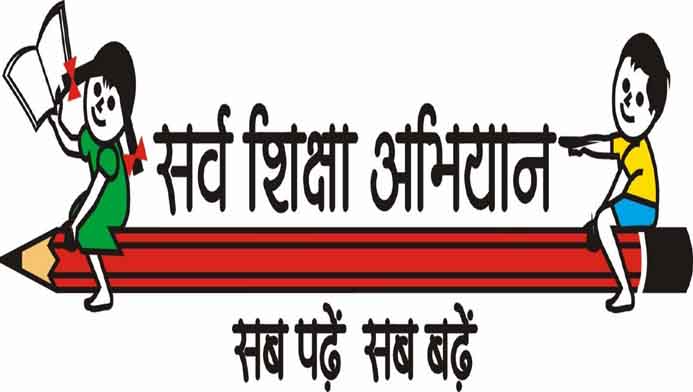Sarva Shiksha Abhiyan (Education for All) is a programme launched by the Indian government to achieve its goal of Universal Elementary Education (UEE). It came into being in the year 2000-2001 as multiple intervention programmes for access to education, retention ratio in school, assimilation of girl students, reconciling social category gaps and bettering the learning quality. The National Policy on Education (NPE) sparked various programmes, like Operation Black Board, Shiksha Karmi Project, District Primary Education Programme and the current Sarva Shiksha Abhiyan, towards achieving the goal of UEE. The range of programmes across years have increased the ratio of children going to school, has bridged the gender difference at primary level and enrolment from depressed classes of society was up in proportion to their population in the lower primary stage but these upward trends wither away in upper primary level. The dropout rate of children belonging depressed and disadvantageous classes is high.
The 86th Amendment Act, 2002, which inserted article 21-A into the Constitution and the RTE Act, 2009 effectuated the right to education as a fundamental right and children between the age of 6 to 14 became entitled to the free and compulsory education. The legal obligation has been cast on the state to make sure that elementary education is accessible to every child between ages 6 to 14. The RTE act 2009 has made the Education for All campaign into a legal justiciable campaign. It mandates for providing education without any differential treatment and discrimination and is based on equity.
Sarva Shiksha Abhiyan is currently India’s magnum opus for Universalization of Elementary Education with not only focusing on curriculum but also undertakes:
- The opening of new schools and alternate schooling facilities,
- Construction of schools and additional classrooms,
- Toilets and drinking water,
- Provisioning for teachers, the regular teacher in service training and academic resource support,
- Free textbooks & uniforms and support for improving learning achievement levels/outcome.
And, after the Right to Education was inserted as a fundamental right, Sarva Shiksha Abhiyan has moved from incentive based approach to entitlements and state has to do away with incentive based approach from other interventions and programmes as well. The post Right to Education (RTE) era saw the necessary changes being incorporated into Sarva Shiksha Abhiyan. The change in contract with the RTE not only confines itself to infrastructural development but also to the vision, objective and mission of Sarva Shiksha Abhiyan. The highlights of the resultant framework are:
- A holistic view of education, as interpreted in the National Curriculum Framework 2005, with implications for a systemic revamp of the entire content and process of education with significant implications for curriculum, teacher education, educational planning and management.
- Equity, to mean not only equal opportunity but also the creation of conditions in which the disadvantaged sections of the society – children of SC, ST, the Muslim minority, landless agricultural workers and children with special needs, etc. – can avail of the opportunity.
- Access, not to be confined to ensuring that a school becomes accessible to all children within specified distance but implies an understanding of the educational needs and predicament of the traditionally excluded categories – the SC, ST and others sections of the most disadvantaged groups, the Muslim minority, girls in general, and children with special needs.
- Gender concern, implying not only an effort to enable girls to keep pace with boys but to view education in the perspective spelt out in the National Policy on Education 1986 and 92; i.e. a decisive intervention to bring about a basic change in the status of women.
- The centrality of a teacher, to motivate them to innovate and create a culture in the classroom, and beyond the classroom, that might produce an inclusive environment for children, especially for girls from oppressed and marginalised backgrounds.
- Moral compulsion is imposed through the RTE Act on parents, teachers, educational administrators and other stakeholders, rather than shifting emphasis on punitive processes.
- The convergent and integrated system of educational management is pre-requisite for implementation of the RTE law. All states must move in that direction as speedily as feasible.
Indian Government has tried to formulate policies and run awareness campaigns to promote education but the realisation of Universal Elementary Education is still seems to be a distant dream. However, we are pulling the strings to push it in right direction. The next few blogs will keep its focus on the Sarva Shiksha Abhiyan and try to understand its implementation strategy and efficacy.
References:
- http://mhrd.gov.in/sites/upload_files/mhrd/files/upload_document/SSA-Frame-work.pdf
- http://mhrd.gov.in/sarva-shiksha-abhiyan
- http://mhrd.gov.in/sites/upload_files/mhrd/files/nep/Inputs_Draft_NEP_2016.pdf

